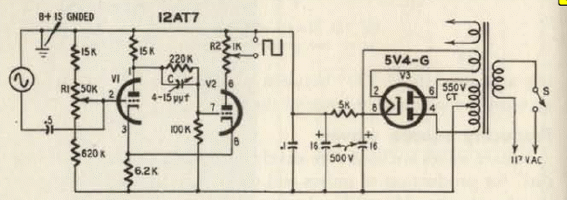This very simple squaring device exhibits somewhat low rise and fall times, making it unsuitable for higher-frequency use. Moreover. its output impedance is high. Much better performance is creasing V2's grid voltage making it less conductive. Simultaneously, Vl's plate current also adds bias to V2 by means of the common cathode resistor. Owing to this sort of “chain reaction", the plate current of V2 (and thus the potential of its plate) has only two possible states, making it very suitable for square-wave production. The mark-space ratio of the wave is adjusted to about unity by setting control R1. The oscillogram below displays a mark-space ratio.





